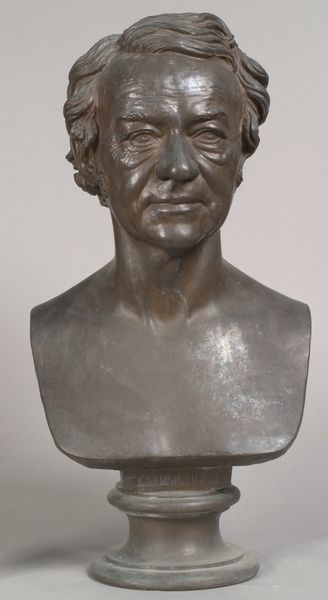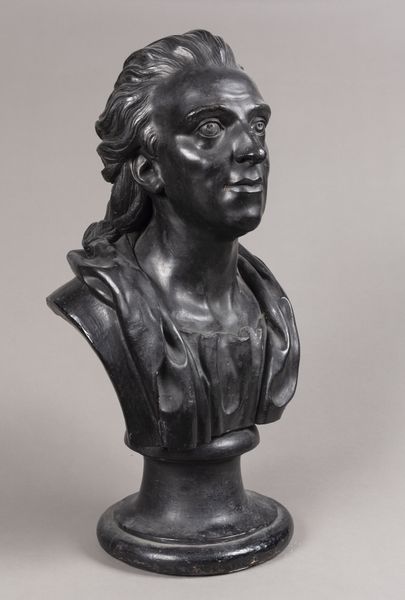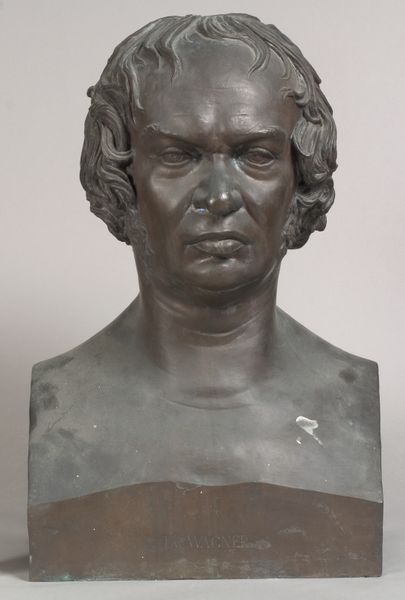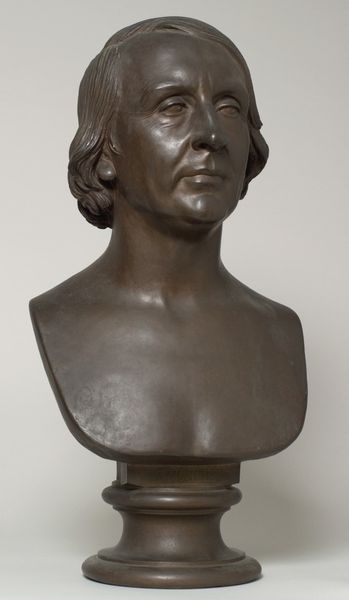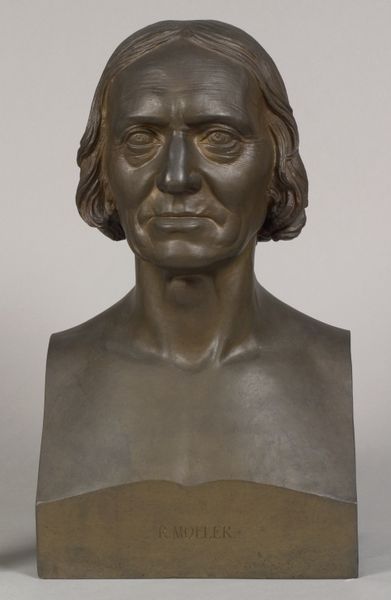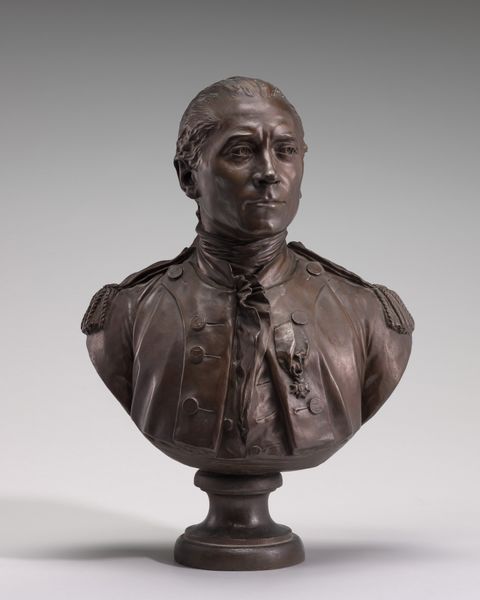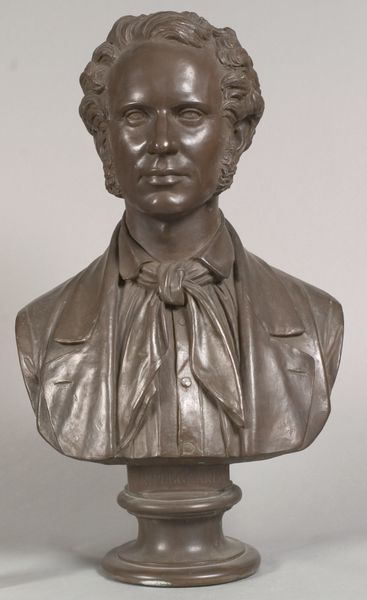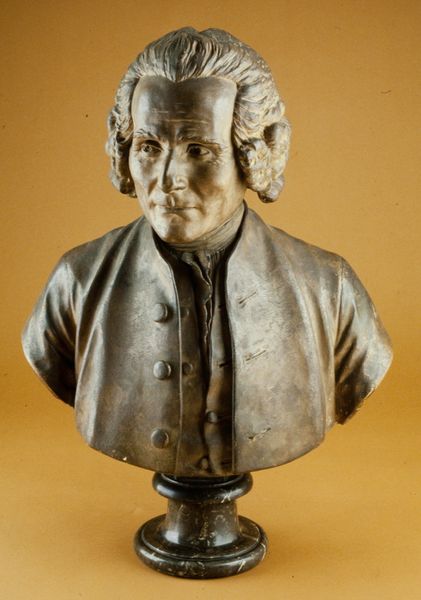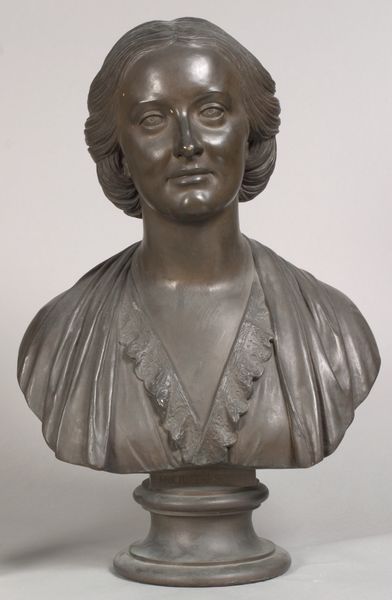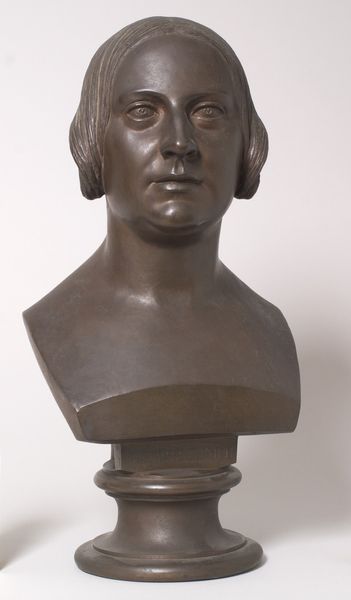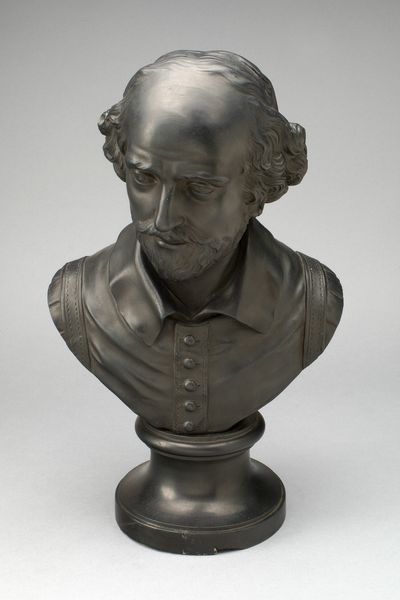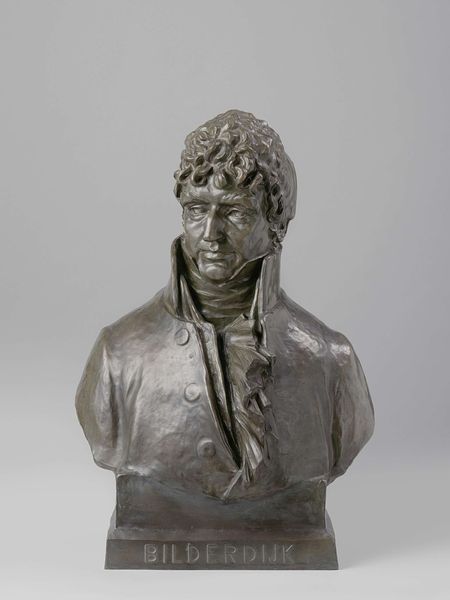
brass, carving, sculpture
#
portrait
#
neoclacissism
#
brass
#
carving
#
sculpture
#
sculpture
Dimensions: 65 cm (height) (Netto)
Curator: What strikes me immediately is this contemplative gaze. The brass almost gives the impression of aged gold. Editor: This is a Neoclassical brass carving from 1781, currently residing at the SMK - Statens Museum for Kunst. It's titled "The Danish Poet Johannes Ewald," and it's by C.F. Stanley. A portrait, but in sculpture form. Curator: Absolutely, there's such an air of solemnity, a pensive mood that permeates the work. And I love that Stanley captured Ewald not in grand formal attire but rather with an open shirt, creating this rather informal, relatable presence, a direct contrast to the stuffy portraits of the era. Do you get that sense too? Editor: Definitely. The piece departs from traditional portraiture. While maintaining a classical composure, this hints at the Romantic sensibilities that were budding at the time—valuing individuality, emotion, almost a bohemian spirit if you consider Ewald’s history and troubled later years marked by poverty. Curator: That almost disheveled yet refined styling around his face. It shows you what? A man preoccupied with deeper thought, no? Like, ‘don’t mind my shirt, I’m busy composing!’. You sense the creative turmoil behind his eyes. I think Stanley was trying to present Ewald, not as a symbol, but as a flawed genius, an artist of immense talent who, was ultimately very human. Editor: Exactly, it speaks to a shift in how artists and intellectuals were viewed. Ewald wasn't a king or noble, but someone deemed worthy of artistic immortality due to his intellectual and cultural contributions. The use of brass, almost golden, certainly elevates him and adds to that air of respect, even reverence. Yet, as you mentioned, there's a conscious decision not to overly idealize him. His humanity shines through despite the material grandeur. Curator: Indeed, you feel you can actually reach out and feel the weight of the era. Knowing what we do now of Ewald makes it even more heartbreaking. The carving captures a man on the cusp. Stanley saw the fragility and strength both, didn't he? That, my friend, is moving art. Editor: Agreed. It serves as a potent reminder that legacies aren't just about flawless heroes; they're also built by the messy, passionate, and very human figures who leave their mark on history. I’m thinking about what mark, for better or worse, we’re going to leave…
Comments
No comments
Be the first to comment and join the conversation on the ultimate creative platform.
